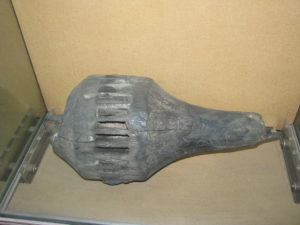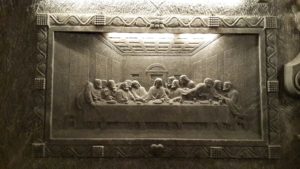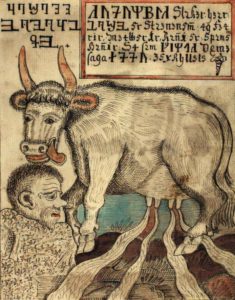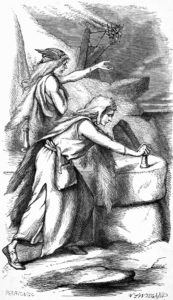Why Tribalism Could Doom the Human Race
I found an interesting article that shows that tribalism and war is not a healthy thing for the male population — and not in the way you think. So, being the Rational Heathen, I’m going to discuss the future of our race, that is Homo sapiens, and how our ancestors may have fucked things up to the point where if we continue this behavior, it could end our species.
Y-Chromosomes and Male Definitions
Now, before anyone gets their panties in a wad, for the sake of simplicity, I’m using the word “male” to describe someone with a Y-chromosome. Likewise, I’m using the term “female” for those who have two X-chromosomes. I’m not going to try to use the politically correct words because, quite frankly, I don’t know what the flavor of the week is. Furthermore, it avoids confusion for those who haven’t followed along. This isn’t saying that the transgendered folks aren’t important, but for the sake of the conversation, I am talking about is heterogeneous pairings that produce offspring. Savvy? So, let’s talk tribalism.
Some Basic Biology (for those who fell asleep in Biology 101)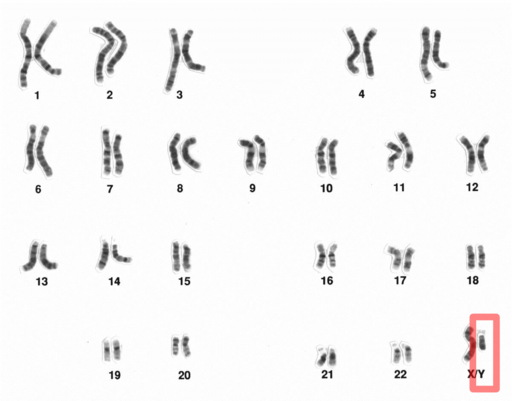
For those who don’t know or didn’t pay attention to sex ed, males have a pair of Y and X-chromosomes which confer their sex. Females have a pair of X-chromosomes. When a male produces sperm, his sperm contains half his chromosomes including either an X or a Y chromosome. (I’m not going into the extra chromosomes which sometimes occur.) The female’s ovaries produce eggs, each with half the chromosomes, and one X-chromosome. (Again, I’m talking the basic set up here.)
So, if an egg gets fertilized, it only has one copy of the Y-chromosome to work with. With females, the offspring will have an X-chromosome from the father and one from the mother. If the offspring is male and has children, any male will have the same Y-chromosome that his father and his grandfather had. Females, on the other hand, have a bigger chance at diversity as the X-chromosomes can get shuffled up with each generation.
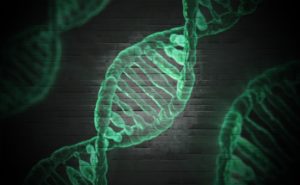 Tribalism and the Y-Chromosome Bottleneck
Tribalism and the Y-Chromosome Bottleneck
About 7000 years ago, human diversity took a huge drop, especially along male lines. Called the Y-chromosome bottleneck, it appeared as though there were one human male for every 17 human females. We know this through our own DNA and DNA from ancestors; bones. Scientists have been trying to explain why there was, and still is, so little Y-chromosome diversity, even though males and females are roughly equal in number. Scientists think there were several factors, of which tribalism and clan hierarchy had almost everything to do with it.
Why Tribalism Caused a Major Problem
In the past when humans were going from hunter/gatherers to farmers, they settled into tribes. Most tribes and clans were patrilineal, meaning that they were organized along the male lineage. That meant that those males and their male offspring who had the most resources (wealth, power, etc) got the females. Some of those clans believed in polygamy; fashioning their sex lives like the barnyard animals they kept. So every clan that had powerful males got to reproduce. The male offspring stuck around because they inherited the wealth and power (as well as their father’s Y-chromosome).
 Wars between clans further took out males who were looking to defend their clan and tribal wealth. Those males who were of lower station often didn’t mate and their genetic code was not passed on. Furthermore, because clans were often isolated, we see a fair amount of close breeding, if not inbreeding, involved. We know that the early Homo sapiens farmers and Neanderthals were inbred, unlike the hunter-gatherers who actually developed a network for finding mates from other tribes whom they interacted with. Once humans settled down to farming, there were less beneficial interactions and more warfare. So, the clans became inbred because of this huge tribalistic attitude.
Wars between clans further took out males who were looking to defend their clan and tribal wealth. Those males who were of lower station often didn’t mate and their genetic code was not passed on. Furthermore, because clans were often isolated, we see a fair amount of close breeding, if not inbreeding, involved. We know that the early Homo sapiens farmers and Neanderthals were inbred, unlike the hunter-gatherers who actually developed a network for finding mates from other tribes whom they interacted with. Once humans settled down to farming, there were less beneficial interactions and more warfare. So, the clans became inbred because of this huge tribalistic attitude.
First, the Inbreeding Part
Before I get into the Y-Chromosome Bottleneck, I’m going to discuss inbreeding. Let’s look at what inbreeding does. Inbreeding concentrates all the genes available in a certain line. That’s all the good genes, and all the bad genes. The problem is that everyone has a few to several bad recessive genes lurking around in their DNA, but they aren’t activated unless they’re matched up with a like gene. By inbreeding, someone has a bigger chance (25 percent) of manifesting the disease lurking in recessive genes. What’s more, without diversity, the immune system isn’t as strong as it should be. With lack of diversity, the immune system doesn’t have the ability to fight against as many diseases as someone who has a more diverse set of DNA. Basically, you run into more difficulty having less genetic variation.
Why the Y-Chromosome Bottleneck is a Huge Problem
So, we know inbreeding is bad, but what about the Y-Chromosome Bottleneck? What we see is a concentration of a small number of Y-chromosome genes. This lack of diversity is already an issue, given the fact that the Y-chromosome is shrinking already. Shrinking? Yes. Some scientists have theorized that in time, the Y-chromosome will disappear, although others dispute this allegation. This, along with our lack of genetic diversity in our ancestors, could cause us more problems if we insist on going back to the tribal ways of living. We could effectively wipe out most of the Y-chromosomes that provide what little male diversity is left. And we could open up our male population to diseases that could wipe them out because they don’t have the diversity to survive such a disease. We’d be looking at a real problem — and possibly extinction.
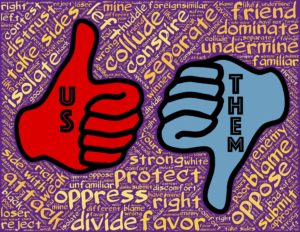 Tribalism is Okay, but within Limits
Tribalism is Okay, but within Limits
It’s okay to have loyalty to a set group of individuals such as family. But tribalistic behavior isn’t always the best. Tribalism as the “us versus them” mentality, isn’t always useful. While you may look at your family as your tribe, the tribe of the ancient Heathens was far bigger than just the nuclear family. They had cousins, aunts, uncles, brothers, sisters, grandparents, parents, and those who were related to those who married into the family. There were also slaves and maybe a group of men and women who took oaths. But there were a fair number who were related, either by blood or marriage.
People back then were forced to enter tribes to ensure their safety and survival, but it grossly limited reproduction. It wasn’t the best thing for humanity because we lost a lot of genetic variation that we could’ve used. This is why reconstructing some of the behaviors of the past aren’t always a good idea.
The other issue with tribalism is how people use it nowadays to exclude the “other.” That is, exclude those who aren’t like themselves, whether it’s based on color, political beliefs, religion, sexual orientation, age, gender, or appearance. Yes, I get that humanity has done this since its very beginning, and we’re probably not going to end it any time soon, but seriously. For a bunch of supposedly enlightened primates, we really end up falling back on some of our worst traits. Which is why I wonder if we’re going to survive 10,000 years, let alone another hundred thousand years.
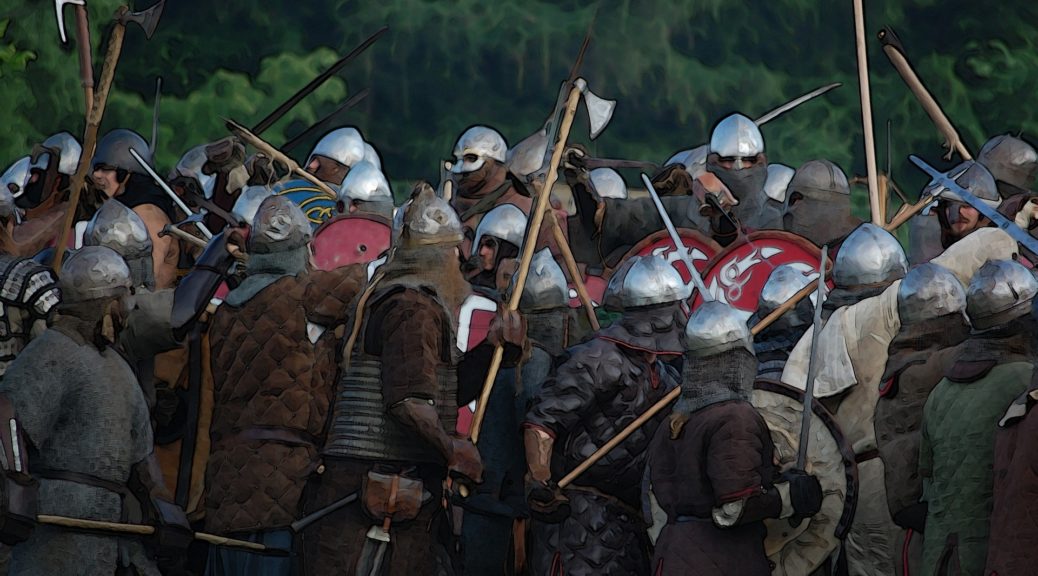
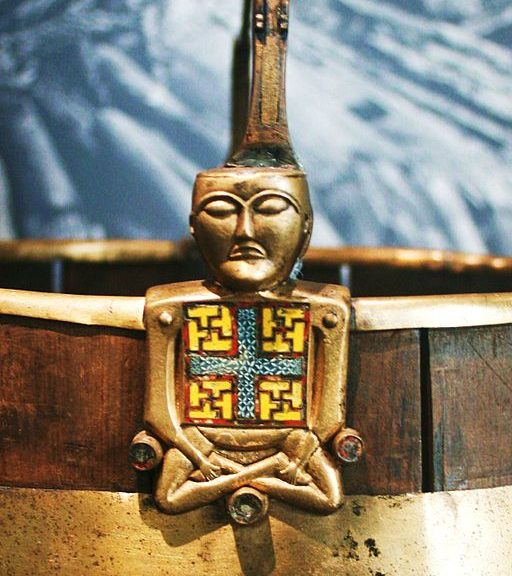
 Once again, I’ve stumbled onto some really big bullshit about arch heathens, so I think it is time to make my opinions known on the subject. Arch heathens, if you get the current vernacular, were an impressive, idealized version of the Heathen. Sort of an uber Heathen, as it were. These purported arch heathens kept the faith pure and knew some sort of unwritten code of conduct across the ancient world that spanned from Greenland to Russia and south into Africa, and across several thousands of years ago, ending with the conversion to Christianity. They were of one mindset and kept the faith pure. (Ein volk! Ein reich! Ein führer!) <– That was sarcasm for those who don’t recognize it.
Once again, I’ve stumbled onto some really big bullshit about arch heathens, so I think it is time to make my opinions known on the subject. Arch heathens, if you get the current vernacular, were an impressive, idealized version of the Heathen. Sort of an uber Heathen, as it were. These purported arch heathens kept the faith pure and knew some sort of unwritten code of conduct across the ancient world that spanned from Greenland to Russia and south into Africa, and across several thousands of years ago, ending with the conversion to Christianity. They were of one mindset and kept the faith pure. (Ein volk! Ein reich! Ein führer!) <– That was sarcasm for those who don’t recognize it.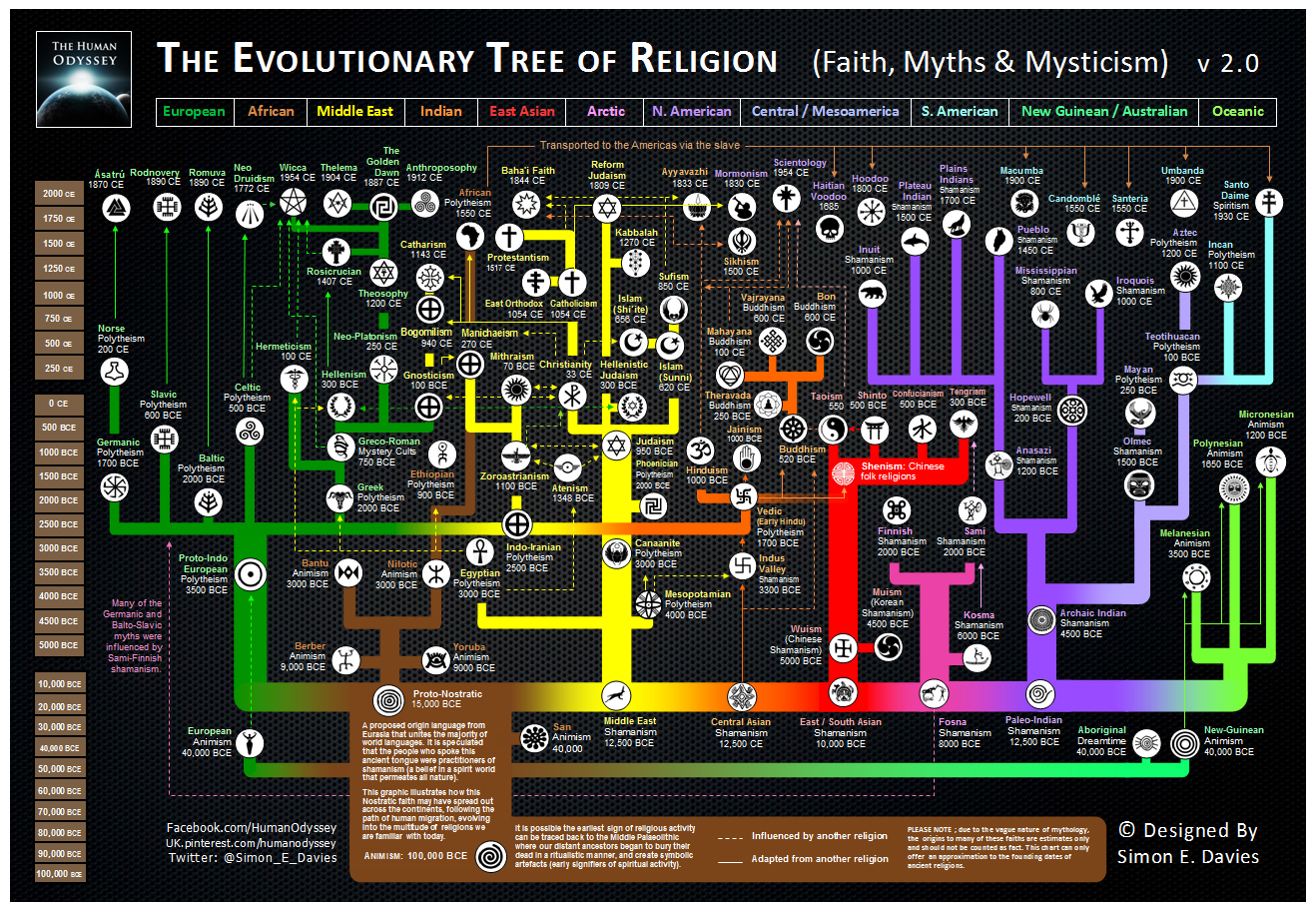
 guy who was in Germany at 1700 BCE? Are we talking about the guy back in 3500 BCE wherever the Hel he was? Or are we talking about the Viking arch heathens? And which Vikings? Are we talking Iceland or Russia? Maybe Sicily? Or France? How about North Africa?
guy who was in Germany at 1700 BCE? Are we talking about the guy back in 3500 BCE wherever the Hel he was? Or are we talking about the Viking arch heathens? And which Vikings? Are we talking Iceland or Russia? Maybe Sicily? Or France? How about North Africa? So, we’ve established that our Heathen ancestors worshiped our gods or forms of our gods for 2700 to 4500 years and have worshiped our gods across the ancient world. We know that religions change all the time, even in the past. All we have to do is look at other forms of religion and see that this is so. Christianity is an excellent example. We can look at the 2000 years Christianity has been in existence and we see plenty of differences, even if we only look at the Catholic Church. Originally Christianity was a conglomeration of ideas that came from Judaism, Zoroastrianism, Gnosticism, Mithracism, and other religions. Eventually, the Council of Nicaea got everyone on the same page, but there were future schisms. The Catholic Church split into Eastern Orthodox and Western Roman Catholicism. And that’s not even talking about the Protestant Reformation.
So, we’ve established that our Heathen ancestors worshiped our gods or forms of our gods for 2700 to 4500 years and have worshiped our gods across the ancient world. We know that religions change all the time, even in the past. All we have to do is look at other forms of religion and see that this is so. Christianity is an excellent example. We can look at the 2000 years Christianity has been in existence and we see plenty of differences, even if we only look at the Catholic Church. Originally Christianity was a conglomeration of ideas that came from Judaism, Zoroastrianism, Gnosticism, Mithracism, and other religions. Eventually, the Council of Nicaea got everyone on the same page, but there were future schisms. The Catholic Church split into Eastern Orthodox and Western Roman Catholicism. And that’s not even talking about the Protestant Reformation. have pinpoint accuracy with historical writings or archaeology. A lot goes on in 200 years in cultures. Don’t believe me? Look back 200 years in our recent past. In 1818, we had no car, no electricity, and the United States had only 20 states. Too modern? Okay, let’s compare 1818 with 1618. Jamestown was founded in 1607 and by 1618 there were a handful of new settlements. People still believed in persecuting witches then. Ships were pretty much wind driven. The Mauritius sailed in 1618. In 1818, we were working on the cusp of the Industrial Revolution with steam engines and steamboats. In 1810, England had its first primitive railroad. By 1827, we had the first railroad in the United States. The 30 years war started in 1618 started by the Jesuits against the Protestants. By 1818, the United States had freedom of religion in place in the Constitution.
have pinpoint accuracy with historical writings or archaeology. A lot goes on in 200 years in cultures. Don’t believe me? Look back 200 years in our recent past. In 1818, we had no car, no electricity, and the United States had only 20 states. Too modern? Okay, let’s compare 1818 with 1618. Jamestown was founded in 1607 and by 1618 there were a handful of new settlements. People still believed in persecuting witches then. Ships were pretty much wind driven. The Mauritius sailed in 1618. In 1818, we were working on the cusp of the Industrial Revolution with steam engines and steamboats. In 1810, England had its first primitive railroad. By 1827, we had the first railroad in the United States. The 30 years war started in 1618 started by the Jesuits against the Protestants. By 1818, the United States had freedom of religion in place in the Constitution.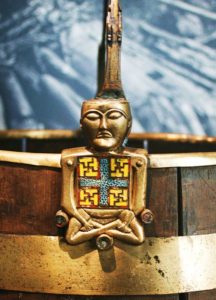 I’ve talked a lot about how Heathenry had been influenced by other cultures and religions. Our ancestors traveled — a lot! They had boats, they had horses, and yes, they had their own two feet. Heathens traveled east into Russia, south into Africa, and west into North America. They saw many different cultures and peoples — and they didn’t kill or conquer all of them. Many they traded with. We have found religious symbols from other cultures (such as the Buddha!) in gold hordes, and we know that Norsemen and Islam have had contact. Since Heathens were open to other forms of beliefs, even then, some aspects of other religions got adopted and incorporated as people from other cultures became assimilated into the Heathen culture.
I’ve talked a lot about how Heathenry had been influenced by other cultures and religions. Our ancestors traveled — a lot! They had boats, they had horses, and yes, they had their own two feet. Heathens traveled east into Russia, south into Africa, and west into North America. They saw many different cultures and peoples — and they didn’t kill or conquer all of them. Many they traded with. We have found religious symbols from other cultures (such as the Buddha!) in gold hordes, and we know that Norsemen and Islam have had contact. Since Heathens were open to other forms of beliefs, even then, some aspects of other religions got adopted and incorporated as people from other cultures became assimilated into the Heathen culture.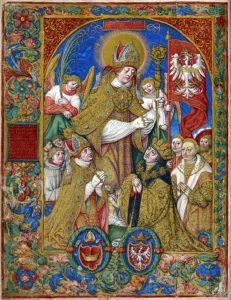
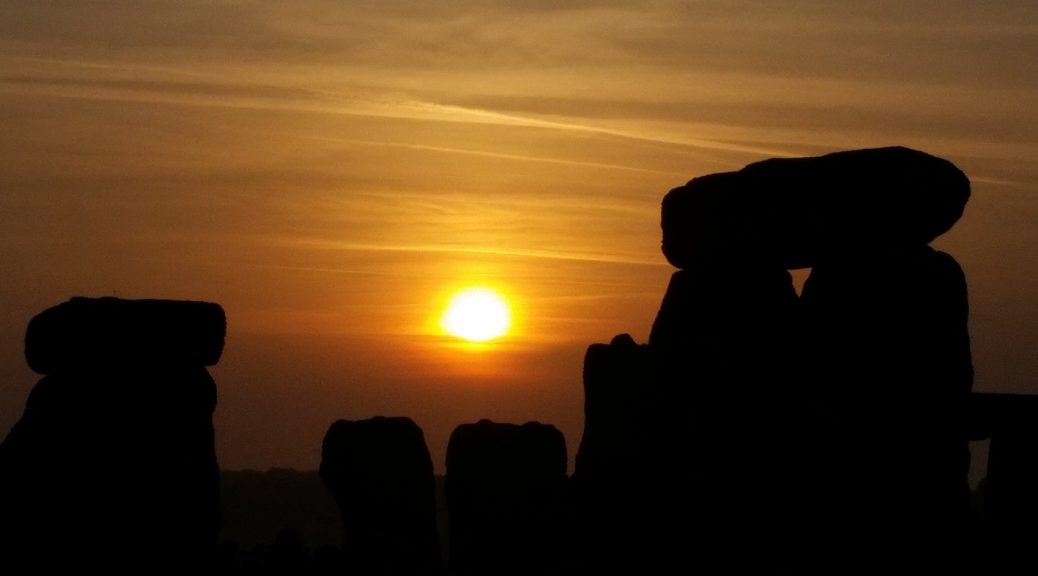
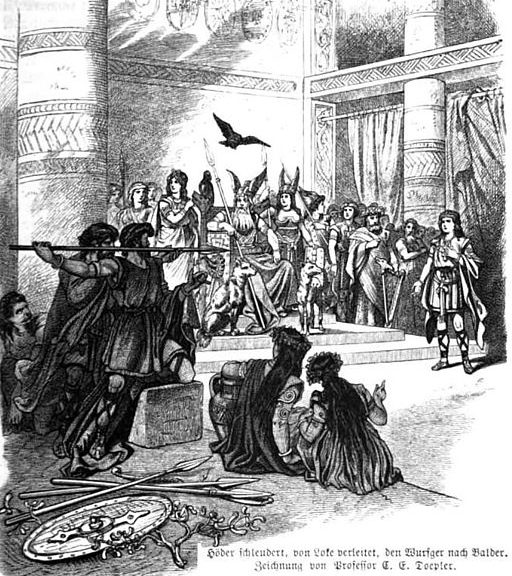
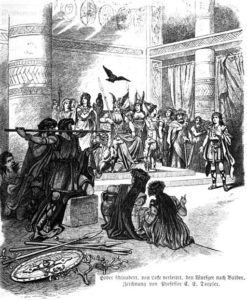 One of the most iconic stories in Norse mythology is the death of Baldr. It is probably the best known among Heathens and often recited by the anti-Lokeans as a way to justify why the Rokkatru are wrong to even consider venerating Loki and his ilk. While I’m not Rokkatru (although I suppose someone can point to me being a follower of Skadi as being a Rokkatru), I do have a deeper analysis of why the story of Baldr’s death is more than face value.
One of the most iconic stories in Norse mythology is the death of Baldr. It is probably the best known among Heathens and often recited by the anti-Lokeans as a way to justify why the Rokkatru are wrong to even consider venerating Loki and his ilk. While I’m not Rokkatru (although I suppose someone can point to me being a follower of Skadi as being a Rokkatru), I do have a deeper analysis of why the story of Baldr’s death is more than face value.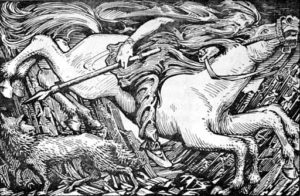 Baldr had nightmares of his death. Odin therefore went to Niflheim to consult a dead seeress to find out what was the cause of Baldr’s nightmares. The seeress told Odin that that Baldr would die by Hodr’s hand (Hodr is the brother of Baldr).
Baldr had nightmares of his death. Odin therefore went to Niflheim to consult a dead seeress to find out what was the cause of Baldr’s nightmares. The seeress told Odin that that Baldr would die by Hodr’s hand (Hodr is the brother of Baldr).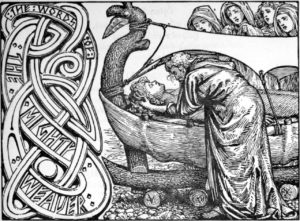 was not throwing things. Loki offered to guide Hodr’s hand so he could throw something. He put the mistletoe into Hodr’s hand. Hodr threw and the dart pierced Baldr’s heart. Baldr fell dead.
was not throwing things. Loki offered to guide Hodr’s hand so he could throw something. He put the mistletoe into Hodr’s hand. Hodr threw and the dart pierced Baldr’s heart. Baldr fell dead. The story of Baldr is the story of the seasons and the natural cycle of life. Our northern ancestors revered the sun and its life-giving heat and warmth. We know the summer solstice was a holy time for northern pagans — especially those who built monuments to the sun during the neolithic age. Baldr is clearly associated with the midsummer sun — the sun at solstice. It is no surprise that his blind brother, Hodr (winter) slays him with the help of Loki (who is a chaos god) which brings about renewal (Ragnarok). Baldr is the renewal of life and all the beauty associated with it. Hodr is the old age and the impending death. Loki (chaos and entropy) brings these changes about.
The story of Baldr is the story of the seasons and the natural cycle of life. Our northern ancestors revered the sun and its life-giving heat and warmth. We know the summer solstice was a holy time for northern pagans — especially those who built monuments to the sun during the neolithic age. Baldr is clearly associated with the midsummer sun — the sun at solstice. It is no surprise that his blind brother, Hodr (winter) slays him with the help of Loki (who is a chaos god) which brings about renewal (Ragnarok). Baldr is the renewal of life and all the beauty associated with it. Hodr is the old age and the impending death. Loki (chaos and entropy) brings these changes about.
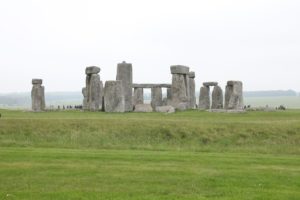 It’s little wonder why the mistletoe is a symbol of the winter solstice, since it is the symbol of Baldr’s death. But the winter solstice is also the symbol of the return of life. We know that the days will grow longer again after December 21st, just as we know the days will start to grow shorter after June 21st. So, this summer solstice, raise a horn or glass of mead to the god of rebirth and renewal. Because we know that Baldr may “die” with the oncoming winter, but he will be reborn once again. (And the Christians thought that they were the only ones with a god who dies and is reborn?)
It’s little wonder why the mistletoe is a symbol of the winter solstice, since it is the symbol of Baldr’s death. But the winter solstice is also the symbol of the return of life. We know that the days will grow longer again after December 21st, just as we know the days will start to grow shorter after June 21st. So, this summer solstice, raise a horn or glass of mead to the god of rebirth and renewal. Because we know that Baldr may “die” with the oncoming winter, but he will be reborn once again. (And the Christians thought that they were the only ones with a god who dies and is reborn?)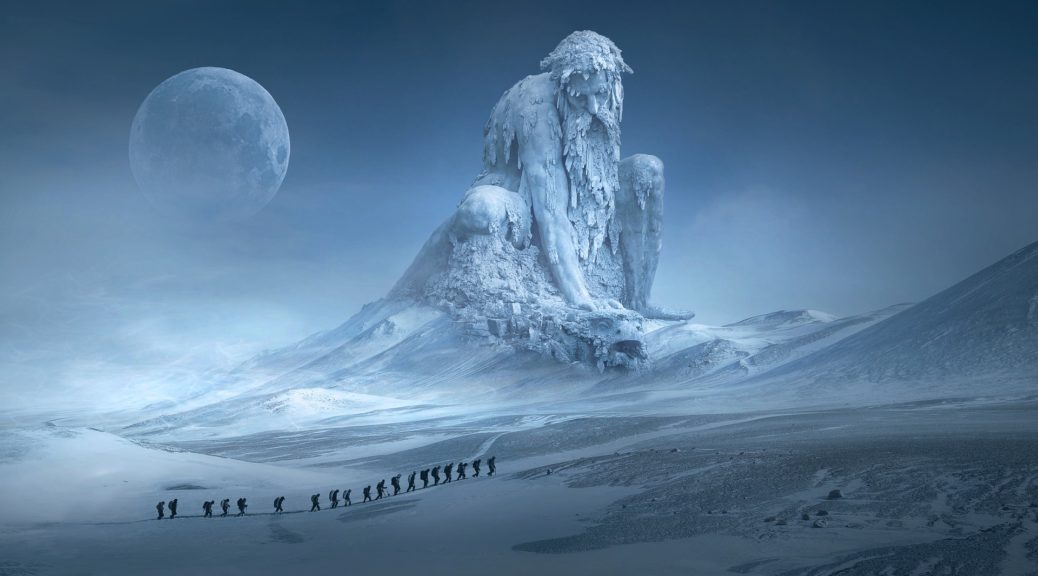
 Apparently my piece on Unverified Personal Gnosis struck a chord with many of my readers. So, I think we need to talk about recognizing what an Unverified Personal Gnosis actually looks like. Mind you, this these are not hard-and-fast rules, but they are ones I use when discerning whether this is UPG or someone’s overactive imagination…
Apparently my piece on Unverified Personal Gnosis struck a chord with many of my readers. So, I think we need to talk about recognizing what an Unverified Personal Gnosis actually looks like. Mind you, this these are not hard-and-fast rules, but they are ones I use when discerning whether this is UPG or someone’s overactive imagination…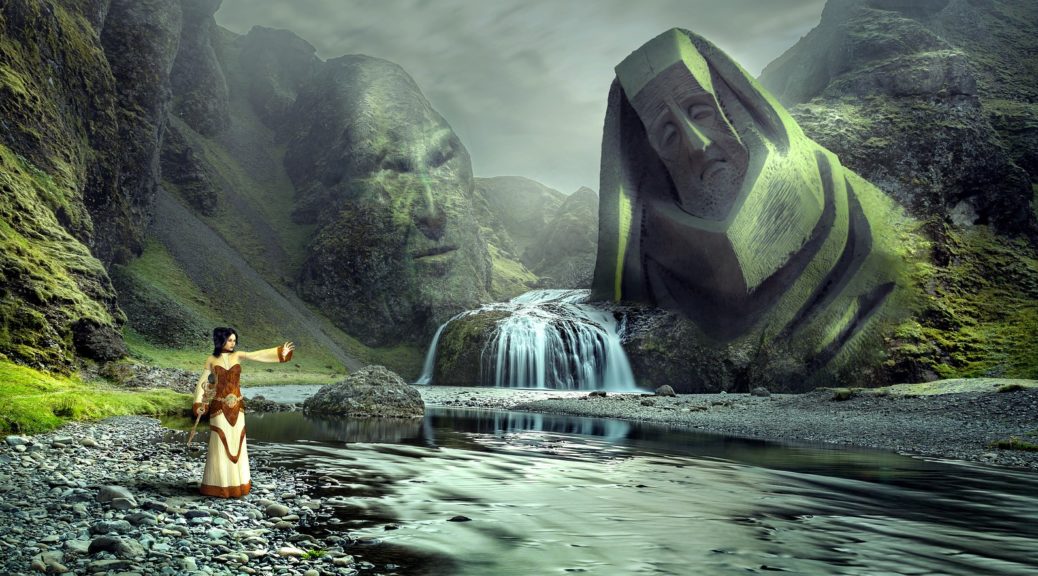
 If you’ve been a Heathen for any amount of time, you’ve heard of UPG or
If you’ve been a Heathen for any amount of time, you’ve heard of UPG or  s over Unverified Personal Gnosis because it is something that isn’t easily provable. It’s personal, meaning that only one person has had that revelation. We can’t go back and quantify that the gods really did speak to that person. To use logic, it’s very hard to prove a negative.
s over Unverified Personal Gnosis because it is something that isn’t easily provable. It’s personal, meaning that only one person has had that revelation. We can’t go back and quantify that the gods really did speak to that person. To use logic, it’s very hard to prove a negative.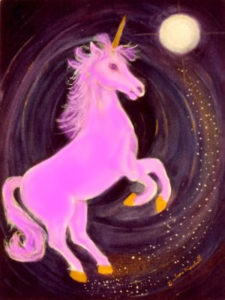
 (Oh shit, someone knew I was going to drag them into this.)
(Oh shit, someone knew I was going to drag them into this.) UPGs had to be the way our ancestors learned about the gods. Think about it. There wasn’t a giant classroom with a bunch of Heathens sitting around throwing spitwads at each other while Odin tried to teach them cosmology. (Or was it Tyr?) I can just imagine Loki teaching everyone how to misbehave while Thor comes in to maintain order. Yeah, warped mind. Deal with it.
UPGs had to be the way our ancestors learned about the gods. Think about it. There wasn’t a giant classroom with a bunch of Heathens sitting around throwing spitwads at each other while Odin tried to teach them cosmology. (Or was it Tyr?) I can just imagine Loki teaching everyone how to misbehave while Thor comes in to maintain order. Yeah, warped mind. Deal with it.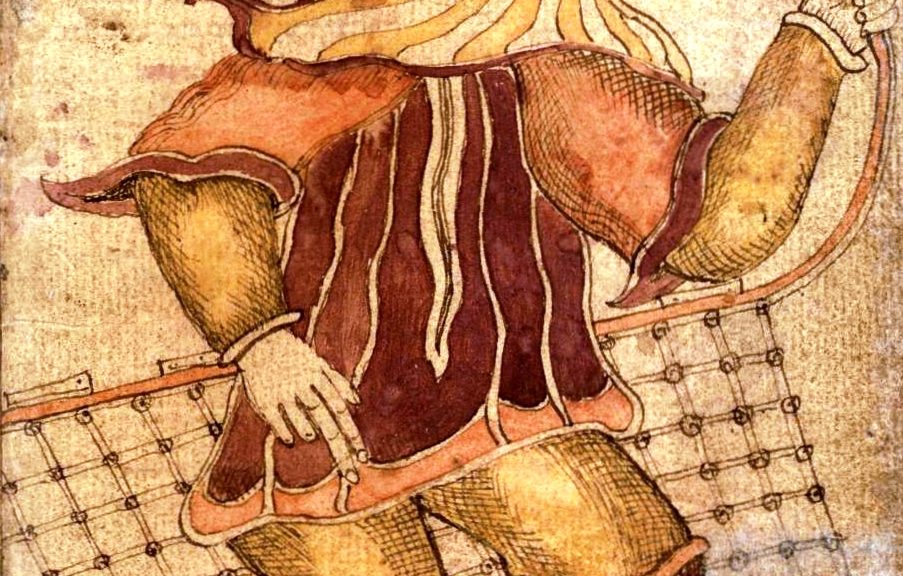
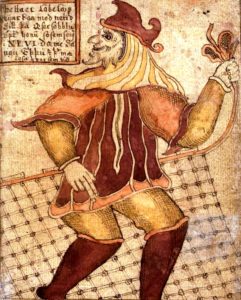 Loki is a bit of an enigma when it comes to the Northern pantheon. No god causes such turmoil among Heathens when it comes to our gods. Did Loki really exist in the pantheon? Was he worshiped? Was he a creation of Snorri? It’s almost as if the trickster intentionally caused this entire debate–which would suit him just fine.
Loki is a bit of an enigma when it comes to the Northern pantheon. No god causes such turmoil among Heathens when it comes to our gods. Did Loki really exist in the pantheon? Was he worshiped? Was he a creation of Snorri? It’s almost as if the trickster intentionally caused this entire debate–which would suit him just fine. 
 As a follower of Tyr, I have a grudging respect for Loki. So much so that I even have a place for him on my altar. Loki as a chaos god shows up constantly in my life — and probably your life, too. And despite all the naysayers claiming that no one ever worshiped Loki, I suspect ancient Heathens did acknowledge him at blots and other religious functions. And I believe that people did worship him as much as other gods. Let me explain why.
As a follower of Tyr, I have a grudging respect for Loki. So much so that I even have a place for him on my altar. Loki as a chaos god shows up constantly in my life — and probably your life, too. And despite all the naysayers claiming that no one ever worshiped Loki, I suspect ancient Heathens did acknowledge him at blots and other religious functions. And I believe that people did worship him as much as other gods. Let me explain why.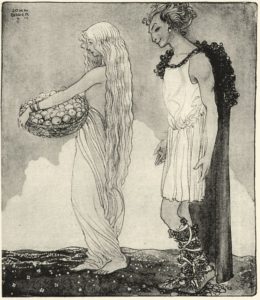
 Loki shows his malicious side both in the death of Baldr and in Lokasenna (Loki’s Flyting). It’s interesting that he isn’t bound because he caused Baldr’s death, but because he insulted the gods and goddesses at a feast. As an aside, does anyone else see a disparity here? Sure, he kills Aegir’s servant, but that’s not why his children are killed and he’s tied up with a venomous snake dripping poison overhead. Granted, the punishment may be for all his troublemaking and this might be the last straw, but seriously?
Loki shows his malicious side both in the death of Baldr and in Lokasenna (Loki’s Flyting). It’s interesting that he isn’t bound because he caused Baldr’s death, but because he insulted the gods and goddesses at a feast. As an aside, does anyone else see a disparity here? Sure, he kills Aegir’s servant, but that’s not why his children are killed and he’s tied up with a venomous snake dripping poison overhead. Granted, the punishment may be for all his troublemaking and this might be the last straw, but seriously? At this stage, you may be wondering if Loki is good or bad. If you take the simplistic route, you look at everything bad Loki has done. Loki killed Baldr through Hodur. He disallowed Baldr to return to Asgard. He sired three creatures which will bring about Ragnarok. Loki then killed Aegir’s servant and insulted the gods. The list goes on and on.
At this stage, you may be wondering if Loki is good or bad. If you take the simplistic route, you look at everything bad Loki has done. Loki killed Baldr through Hodur. He disallowed Baldr to return to Asgard. He sired three creatures which will bring about Ragnarok. Loki then killed Aegir’s servant and insulted the gods. The list goes on and on.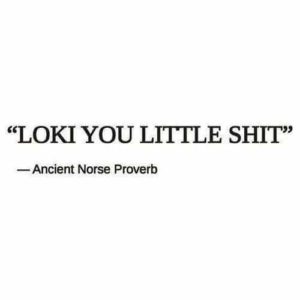 Oddly enough, I’ve discovered that if you stay on good terms with Loki, he will aid you whenever he can. But his aid is often fraught with chaos, and your life will take a turn toward the surreal should you decide to make him your primary god. It has been my and others’ experience that Loki will help you when he can, but chaos will linger with you as a type of payment. For every good thing, you may have a bad thing happen. In most cases, Loki will help you, but don’t be surprised is there is a catch. (With most of the Northern gods, there is always a catch somewhere.)
Oddly enough, I’ve discovered that if you stay on good terms with Loki, he will aid you whenever he can. But his aid is often fraught with chaos, and your life will take a turn toward the surreal should you decide to make him your primary god. It has been my and others’ experience that Loki will help you when he can, but chaos will linger with you as a type of payment. For every good thing, you may have a bad thing happen. In most cases, Loki will help you, but don’t be surprised is there is a catch. (With most of the Northern gods, there is always a catch somewhere.)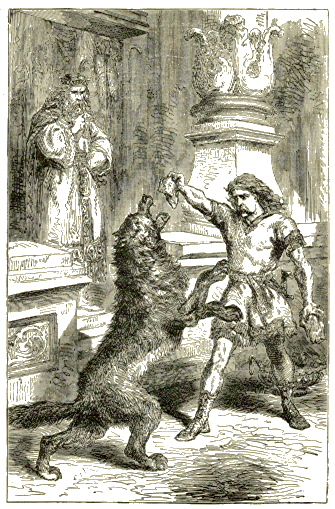
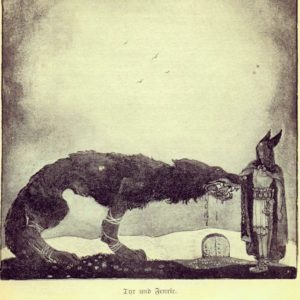 Why Loki is a Powerful God
Why Loki is a Powerful God
 “I think I might have problems with wights,” I told one wight expert about issues at my barn. Never mind that I’m strongly agnostic about wights, and never mind that I don’t believe in magic. I was at wit’s end when it came to my goats getting sick and dying. I had one necropsy performed on a dead kid which proved nothing except that I had a very healthy, dead kid. The expert recommended that I perform a salt purification ritual to rid the barn of negative influences.
“I think I might have problems with wights,” I told one wight expert about issues at my barn. Never mind that I’m strongly agnostic about wights, and never mind that I don’t believe in magic. I was at wit’s end when it came to my goats getting sick and dying. I had one necropsy performed on a dead kid which proved nothing except that I had a very healthy, dead kid. The expert recommended that I perform a salt purification ritual to rid the barn of negative influences.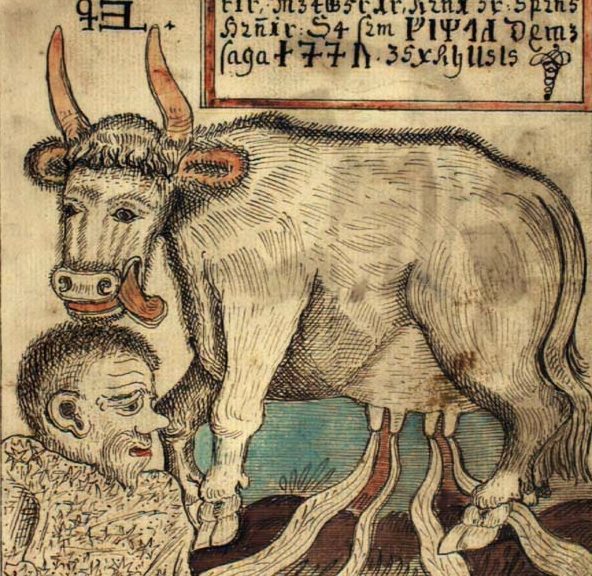
 Why Salt was so Important
Why Salt was so Important